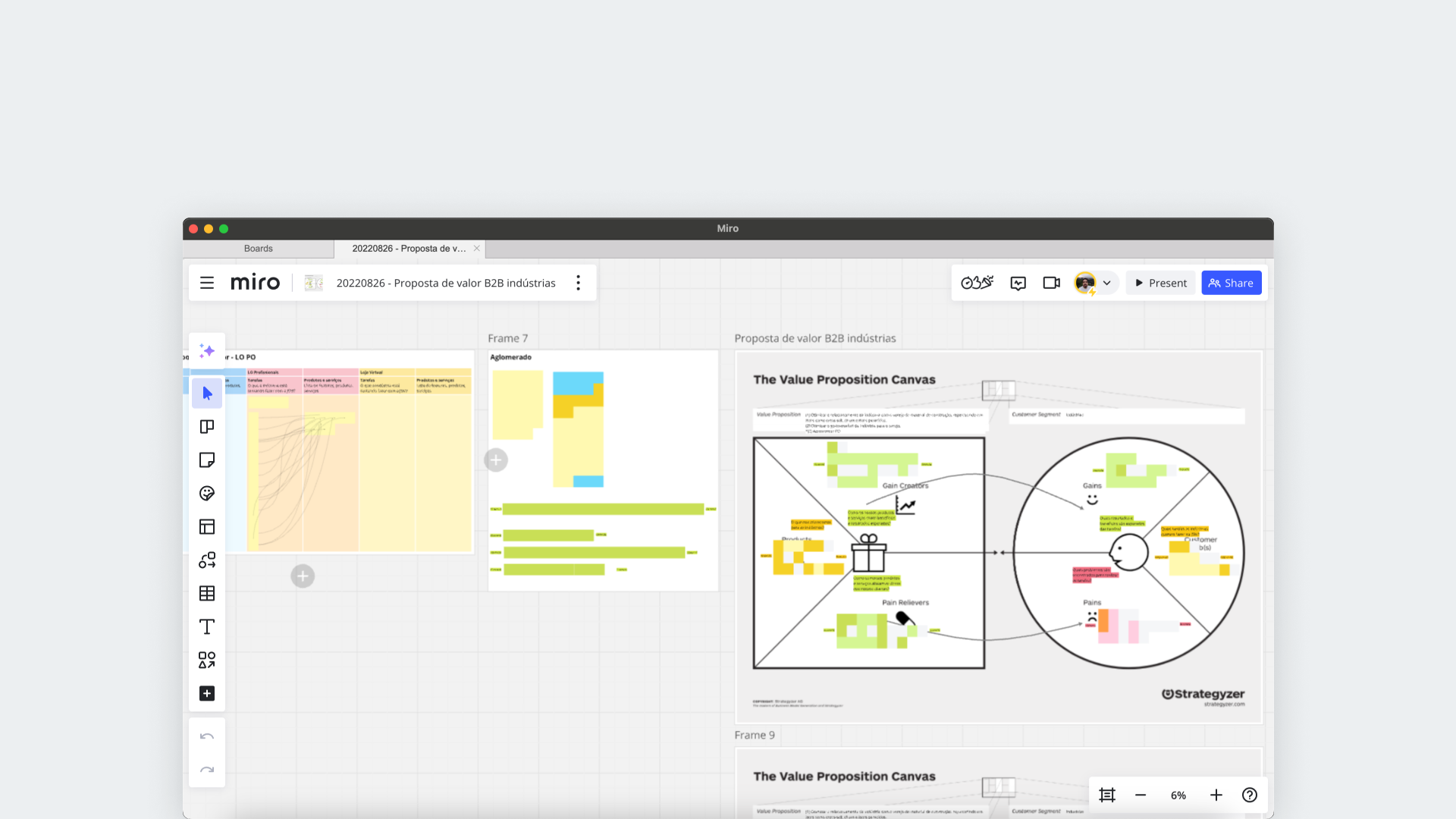Mapping and testing a B2B value proposition in a leaner way

Situation
The building materials ecosystem included a marketplace, a loyalty program for industries and stores, and another loyalty program for construction professionals. While these products aimed to provide value, there was internal recognition of a major gap: unclear understanding of what was truly being offered versus what industries valued. This misalignment limited the ecosystem’s ability to deliver meaningful client value.
Task
I was responsible for leading a research initiative for the Squad Industries team. The goals were:
- Map industries’ pain points, tasks, and goals within the ecosystem.
- Identify gaps in products and services versus client needs.
- Propose strategies to connect and improve the value delivered across the ecosystem.
- Build a foundation for aligning offerings with client priorities.
Action
I designed and executed a structured, lean research process:
- Research:
- Conducted interviews with strategic representatives from each product to map industries’ needs.
- Curated insights with support from a Business Coordinator and an ex-industry collaborator
- Applied Osterwalder’s framework to evaluate offerings (offered/partially offered/not offered vs. attended/partially attended/not attended).
- Ideation:
- Identified gaps where products and services fell short of meeting client expectations.
- Proposed creating a consultancy team to address gaps, act as an MVP concierge, and gather deeper insights.
- Interpreted results as hypotheses for further validation with industry stakeholders.
Result
The research uncovered important insights:
- Gaps in offerings: revealed weaknesses alongside existing strengths across the ecosystem.
- Documented industry pain points and unmet needs, forming a foundation for improvements.
- Improved clarity on value connections between products, showing how offerings could work together.
Although limited by reliance on internal perspectives, treating the results as hypotheses and planning a consultancy team mitigated risks.
Reflection and learnings
- Internal research can provide valuable hypotheses when conducted with structured frameworks.
- Balancing lean timelines with depth of insight is challenging but achievable with strategic focus.
- A consultancy team can both bridge value gaps and serve as a testing ground for innovations.
- Adapting Osterwalder’s methodology helped deliver actionable results under time constraints.
Future opportunities
- Validate hypotheses directly with industry stakeholders.
- Expand and strengthen the consultancy team’s role in ongoing monitoring and testing.
- Enhance product integration to deliver seamless, ecosystem-wide value.
- Use customer validation to refine strategies and align more closely with real industry needs.